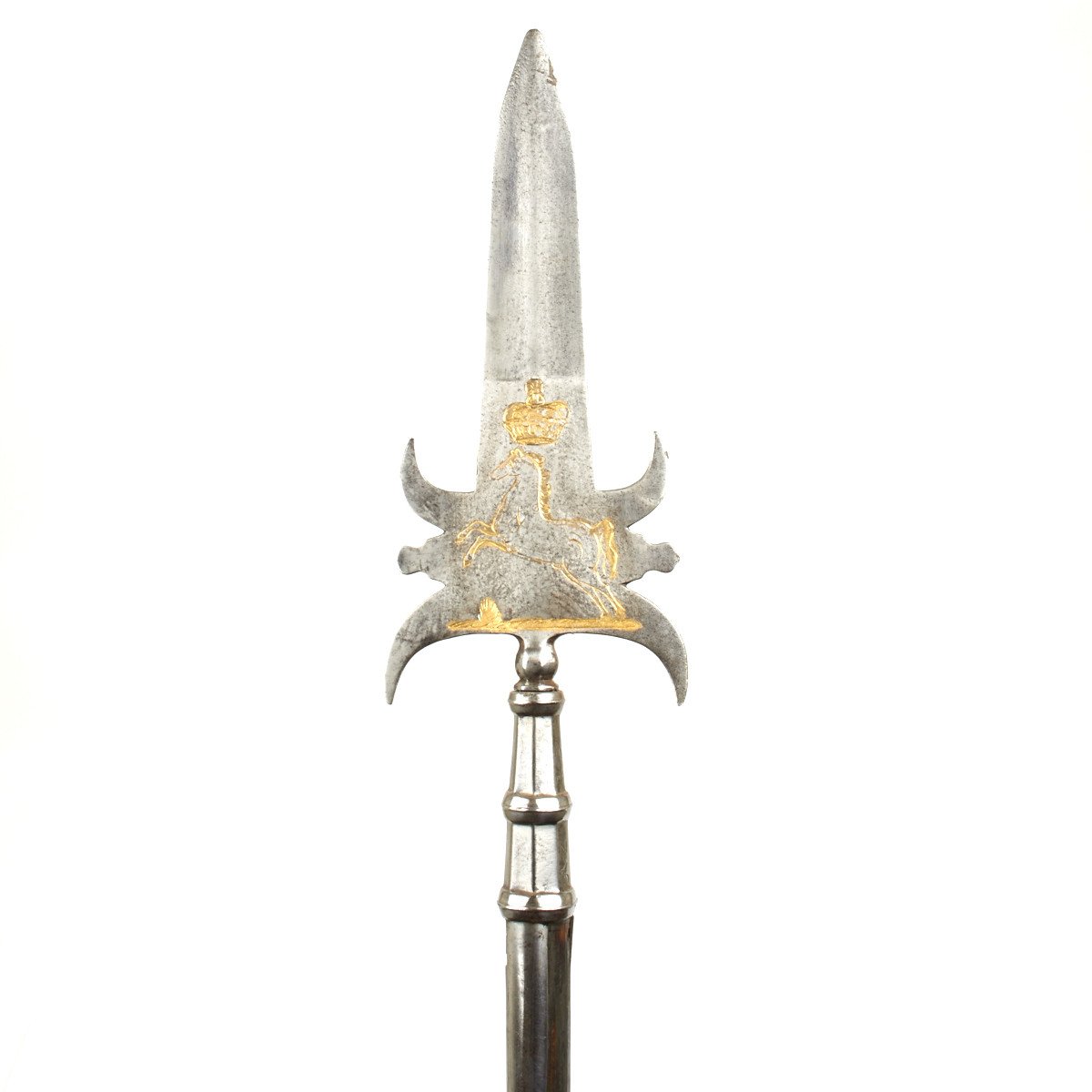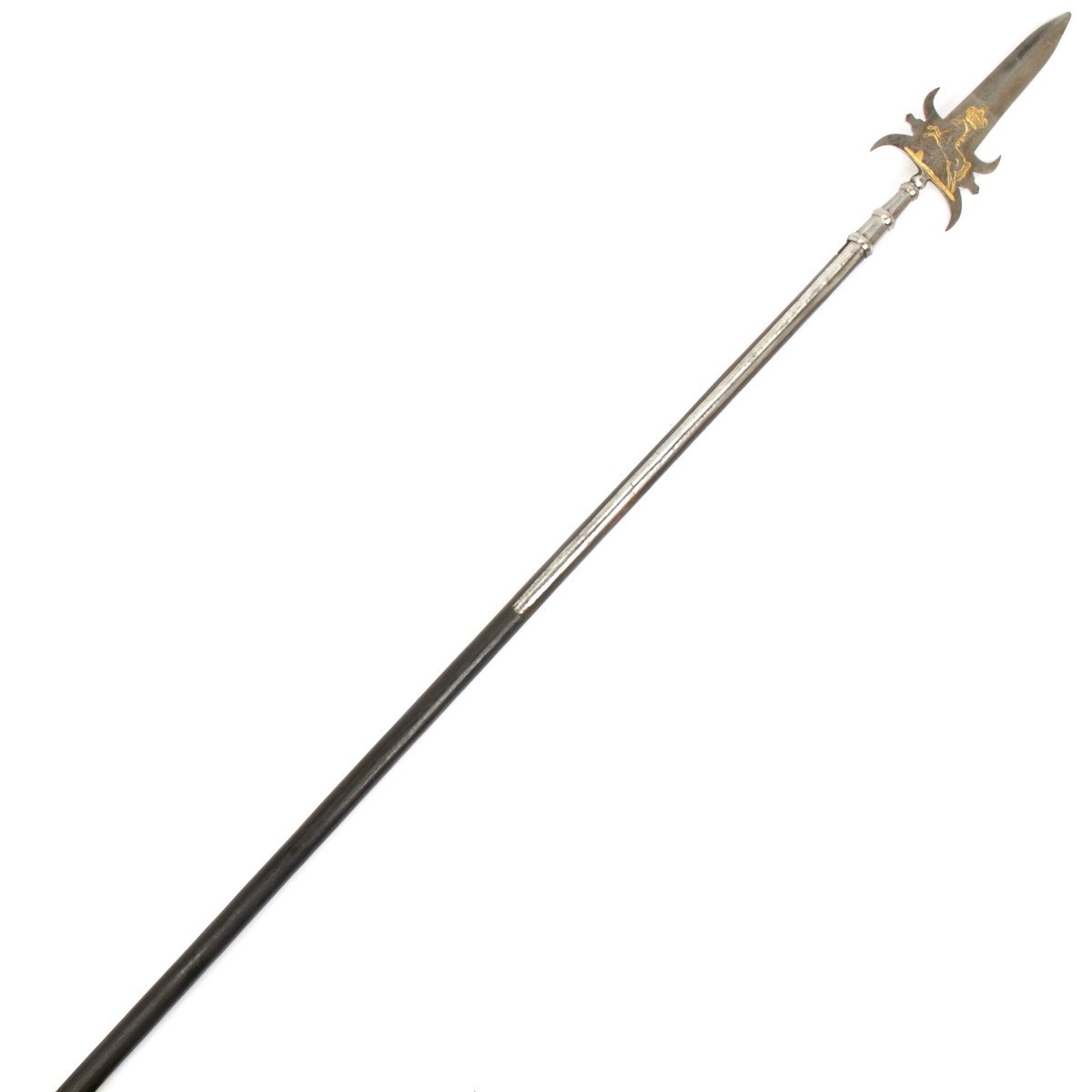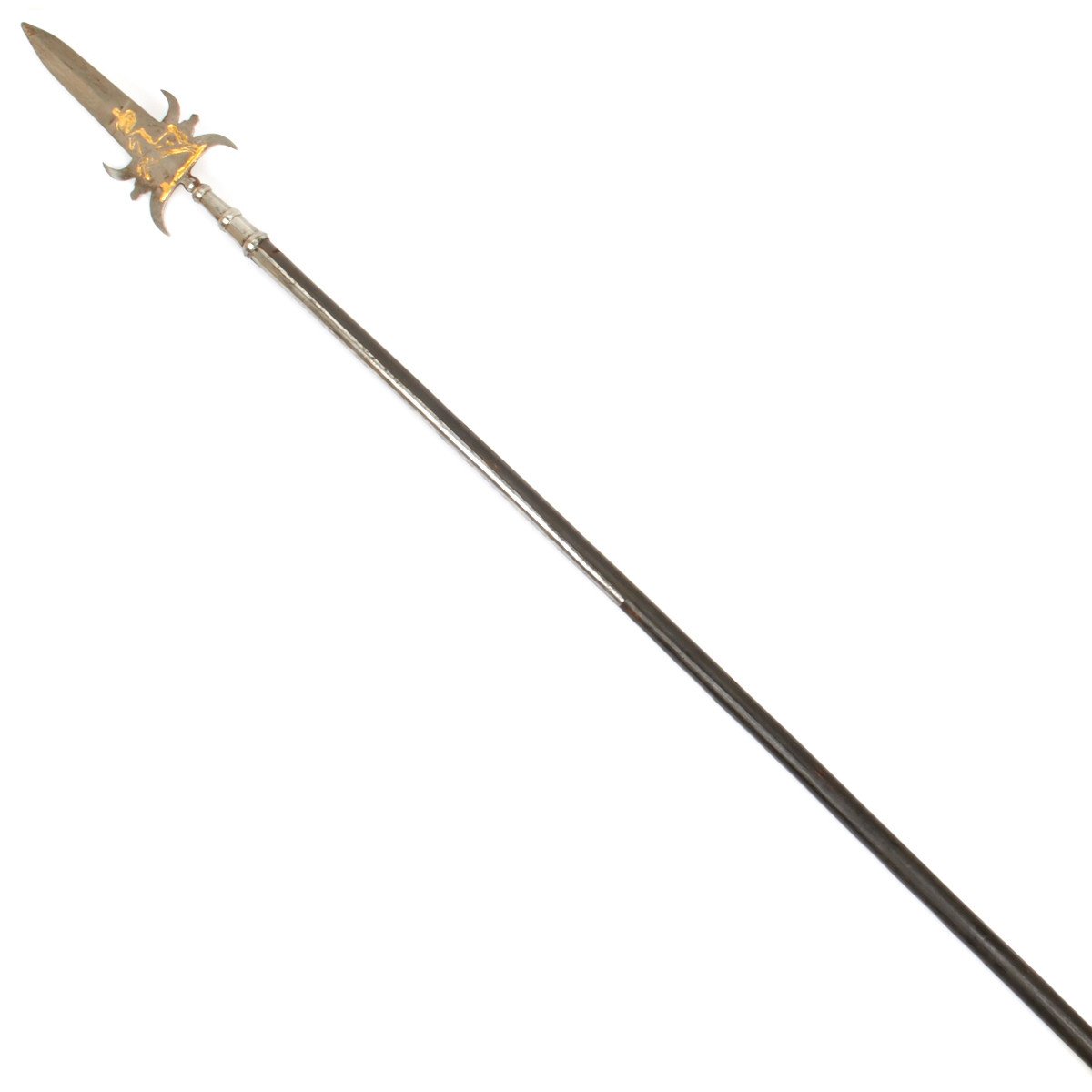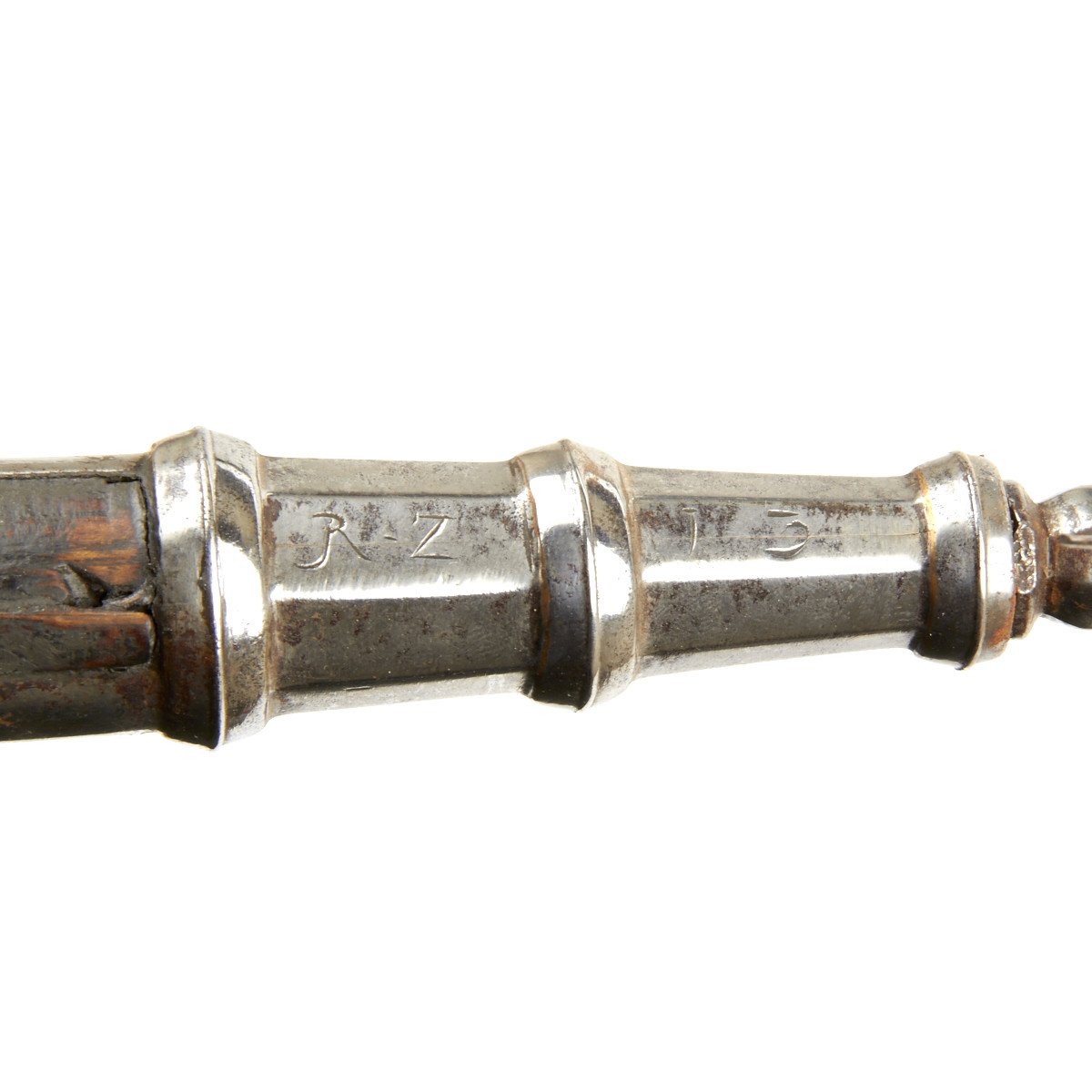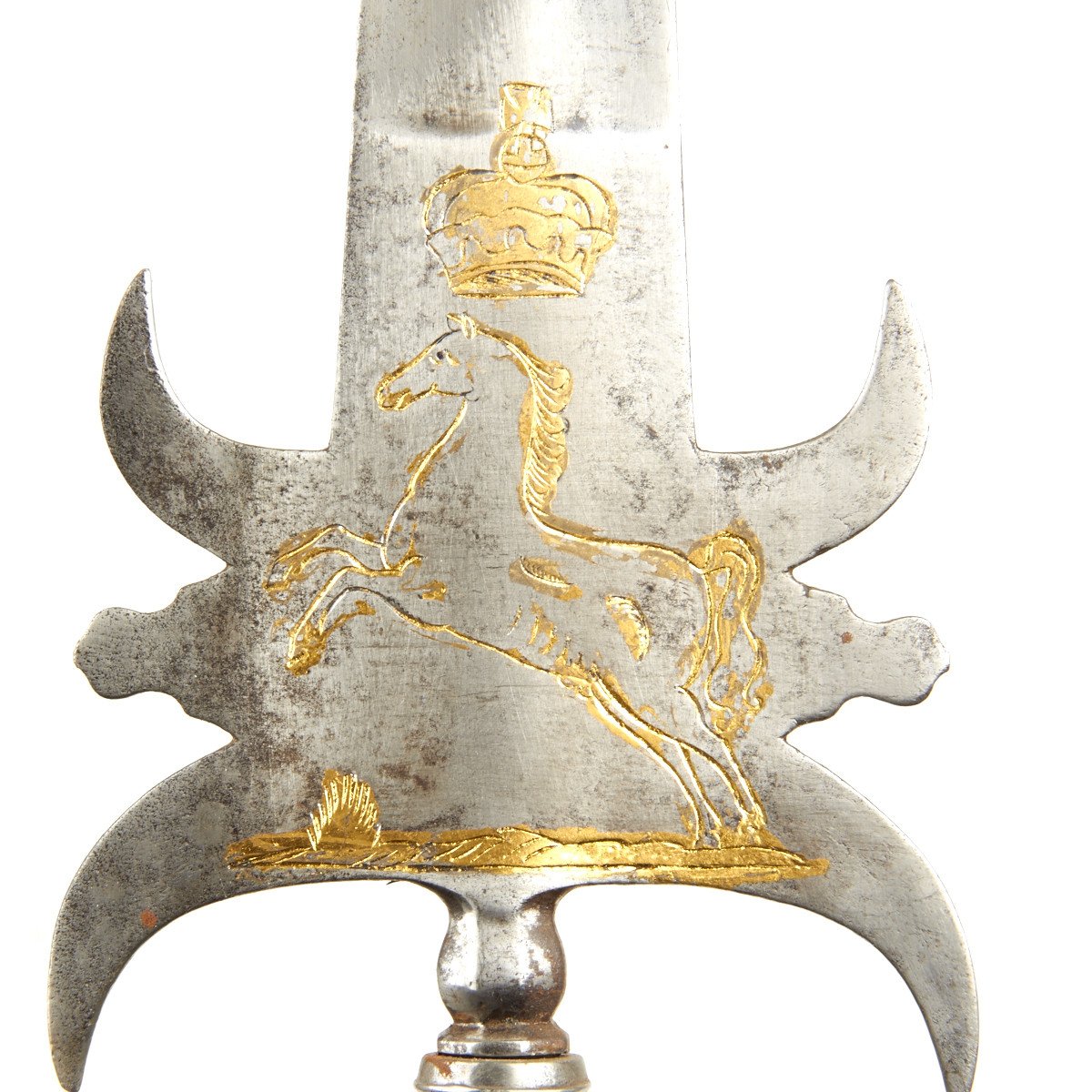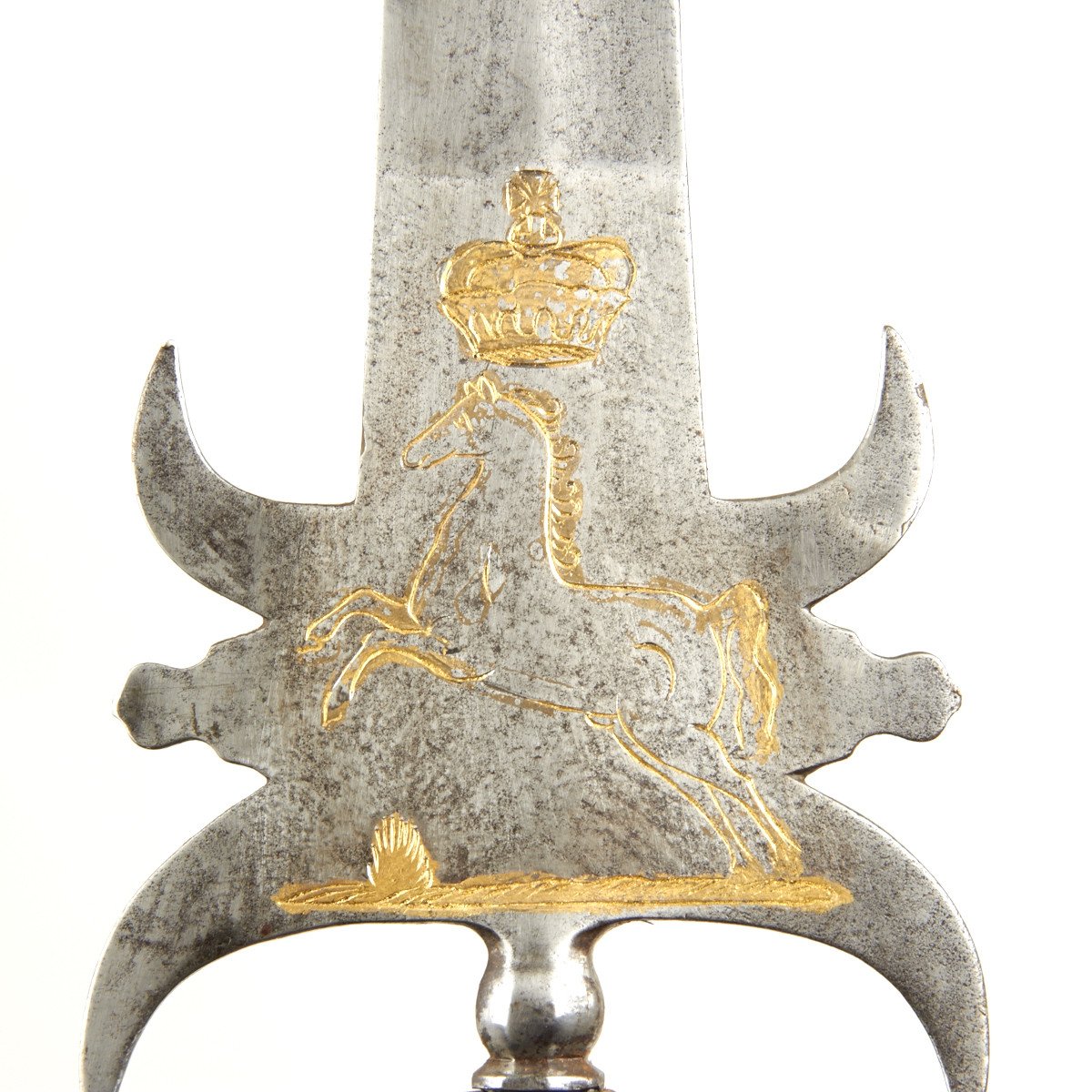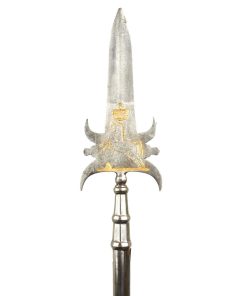Original American Revolutionary War Era Sergeant Spontoon Leaping Horse of Brunswick Original Items
$ 4.495,00 $ 1.123,75
Original Item: Only One Available. This is a 85″ Pole Arm Spontoon with a 10″ iron head of the type carried by German Mercenary Sergeants from an area of what is now Germany then known as “Brunswick-Wolfenbuttell” during the American Revolutionary War.
Brunswick-Wolfenbüttel (“Brunswick”)
Prince Carl of Brunswick-Wolfenbüttel was a brother-in-law of King George III of Great Britain. Braunschweig-Lüneburg, or Brunswick(-Lüneburg), was a duchy divided into sub-districts, one of which was ruled by George III. Duke Charles I of Brunswick-Bevern was Duke of Brunswick-Wolfenbüttel; his son and heir, Charles William Ferdinand, was married to Princess Augusta of Great Britain, the sister of George III. The territory, called a “Duchy,” was a principality of the Holy Roman Empire.
In 1775 Charles William Ferdinand (“Prince Carl”) told King George III that Brunswick had soldiers who could be used to help put down the rebellion in the Americas. Brunswick was the first German-speaking state to sign a treaty supporting Great Britain, on 9 January 1776. It agreed to send 4,000 soldiers: four infantry regiments, one grenadier battalion, one dragoon regiment and one light infantry battalion.[16] The Brunswick treaty provided that all troops would be paid in Imperial Thalers including two months’ advance pay, but required that all troops take an oath of service to King George III.[25] A controversial clause in the agreement stipulated that Duke Charles I would be paid £7 and 4s to replace each Brunswick soldier killed in battle- with three wounded men equal to one dead man; Charles, however, would pay to replace any deserters or any soldier who fell sick with anything other than an “uncommon contagious malady.”
Duke Charles I provided Great Britain with 4,000 foot soldiers and 350 heavy dragoons (dismounted) under Lt-Colonel Friedrich Baum, all commanded by General Friedrich Adolf Riedesel. These soldiers were the majority of the German-speaking regulars under General John Burgoyne in the Saratoga campaign of 1777, and were generally referred to as “Brunswickers.” The combined forces from Brunswick and Hesse-Hanau accounted for nearly half of Burgoyne’s army,[28] and the Brunswickers were known for being especially well-trained.[29] Riedesel’s Brunswick troops made a notable entry into the Battle of Hubbardton, singing a Lutheran hymn while making a bayonet charge against the American right flank, which may have saved the collapsing British line. Riedesel’s wife, Friederike, traveled with her husband and kept a journal which remains an important primary account of the Saratoga campaign. After Burgoyne’s surrender, 2,431 Brunswickers were detained as part of the Convention Army until the end of the war.
Brunswick sent 5,723 troops to North America, of whom 3,015 did not return home in the autumn of 1783. Some losses were to death or desertion, but many Brunswickers became familiar with America during their time with the Convention Army, and when the war ended, they were granted permission to stay by both Congress and their officers.[15] Many had taken the opportunity to desert as the Convention Army was twice marched through Pennsylvania German settlements in eastern Pennsylvania. As the Duke of Brunswick received compensation from the British for every one of his soldiers killed in America, it was in his best interest to report the deserters as dead, whenever possible. The Duke even offered six months’ pay to soldiers who remained or returned to America.
This Spontoon comes from Brunswick-Wolfenbuttel and displays the crown over the Leaping Horse of Brunswick on both sides of the blade. Much of the gold inlay remains. The partizan pole arm was not so much a weapon as it was a sign of rank used by Sergeants, a tradition dating back hundreds of years before the introduction of firearms.
The base of the head on the steel sleeve portion of the wood pole is nicely marked: R-Z 13
This spontoon is one that originated from the German Castle of Schloss Marienburg the traditional home of the Dukes of Brunswick-Luneburg-Calenberg from the 1600s and was sold off in 2005, with the finest items being offered by Sotheby’s a auction, the catalog for which is still available for easy reference online.
A very similar Spontoon with the same crowned leaping horse engraving is illustrated in SWORDS AND BLADES OF THE AMERICAN REVOLUTION by George C. Neumann (a truly wonderful book) published in 1991 by Rebel Publishing. See page 221 (item 120.PA)
The original wood shaft retains it’s original bottom mount in lovely matured condition.
Dimensions-
85″ overall length
10″ iron head
Fast Shipping with Professional Packaging
Thanks to our longstanding association with UPS FedEx DHL, and other major international carriers, we are able to provide a range of shipping options. Our warehouse staff is expertly trained and will wrap your products according to our exact and precise specifications. Prior to shipping, your goods will be thoroughly examined and securely secured. We ship to thousands clients each day across multiple countries. This shows how we're dedicated to be the largest retailer on the internet. Warehouses and distribution centres can be located throughout Europe as well as the USA.
Note: Orders with more than one item will be assigned a processing date depending on the item.
Before shipping before shipping, we'll conduct a thorough inspection of the items you have ordered. Today, the majority of orders will be delivered within 48 hours. The delivery time will be between 3-7 days.
Returns
The stock is dynamic and we cannot completely manage it because multiple stakeholders are involved, including our factory and warehouse. So the actual stock may alter at any time. It's possible that you may not receive your order once the order has been made.
Our policy is valid for a period of 30 days. If you don't receive the product within 30 days, we are not able to issue a refund or an exchange.
You can only return an item if it is unused and in the same state as the day you received it. You must have the item in its original packaging.
Related products
Uncategorized
Uncategorized
Uncategorized
Uncategorized
Uncategorized
Uncategorized
Uncategorized
Uncategorized
Band of Brothers ORIGINAL GERMAN WWII Le. F.H. 18 10.5cm ARTILLERY PIECE Original Items
Uncategorized
Uncategorized
Uncategorized
Uncategorized
Armored Burgonet Helmet & Polearm from Scottish Castle Leith Hall Circa 1700 Original Items
Uncategorized
Uncategorized
Angolan Rebel 1970s era 60mm Inert Display Mortar from Angolan Civil War Original Items
Uncategorized
Uncategorized
Uncategorized
Uncategorized
Uncategorized
Uncategorized
Australian WWII Owen MK1 Machine Carbine SMG Custom Fabricated Replica with Sling Original Items
Uncategorized
Uncategorized
